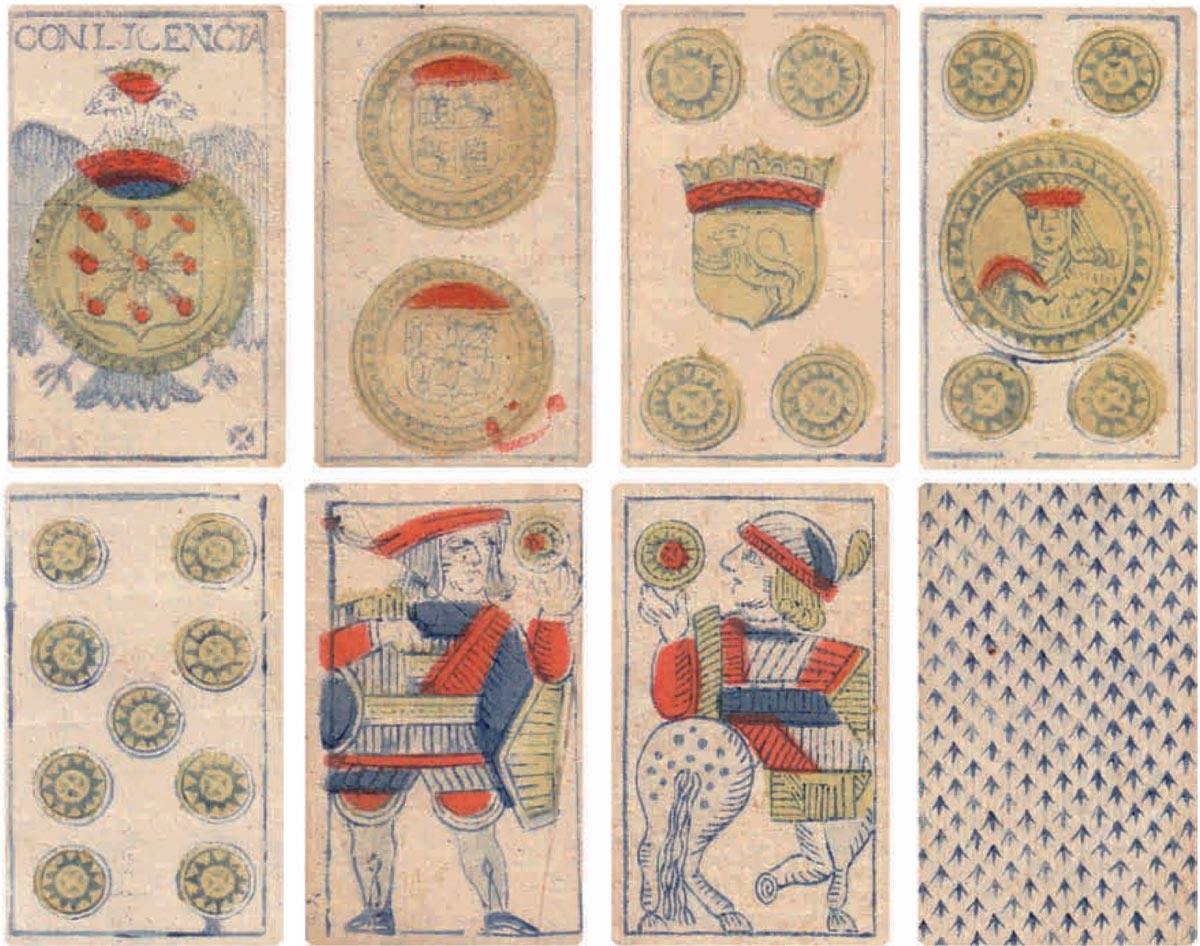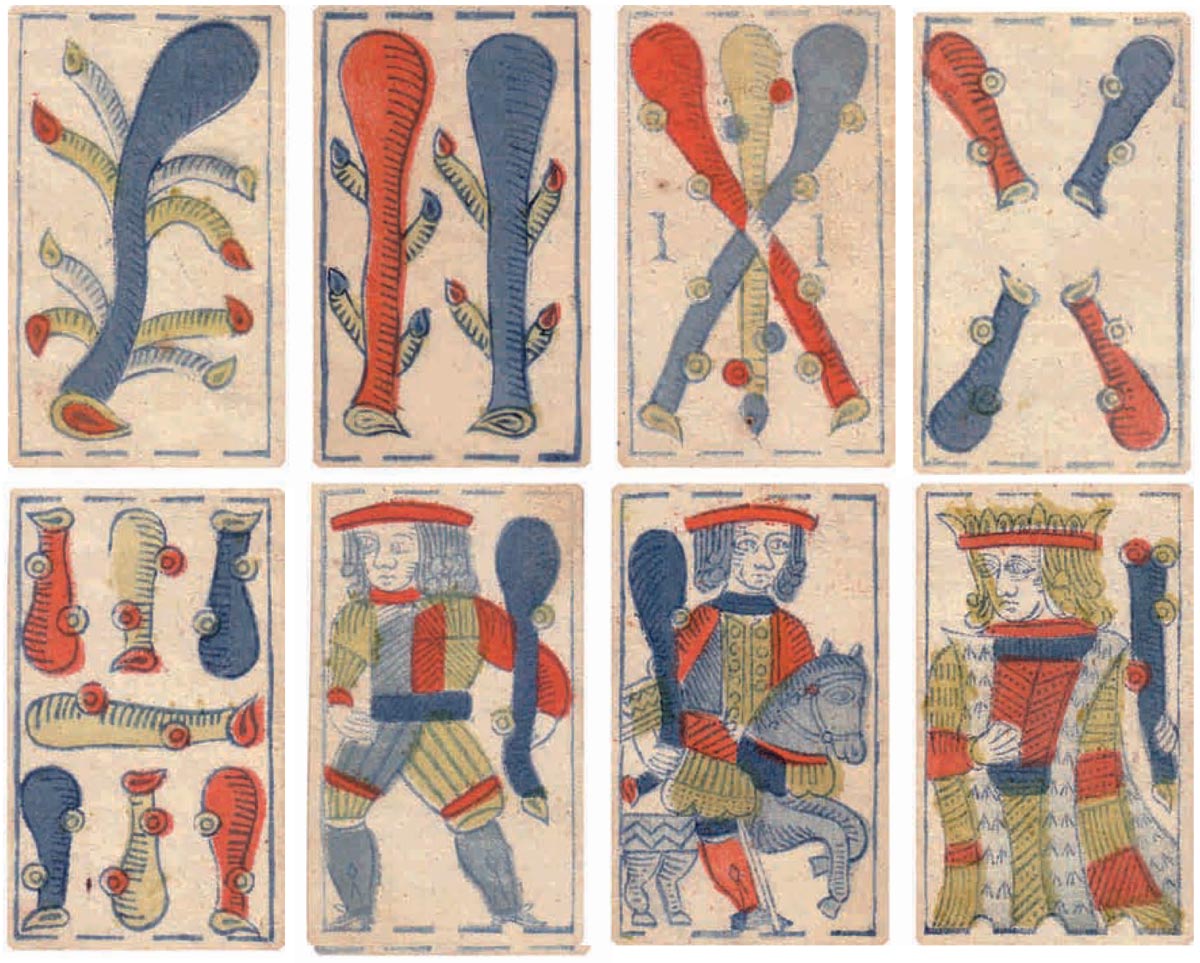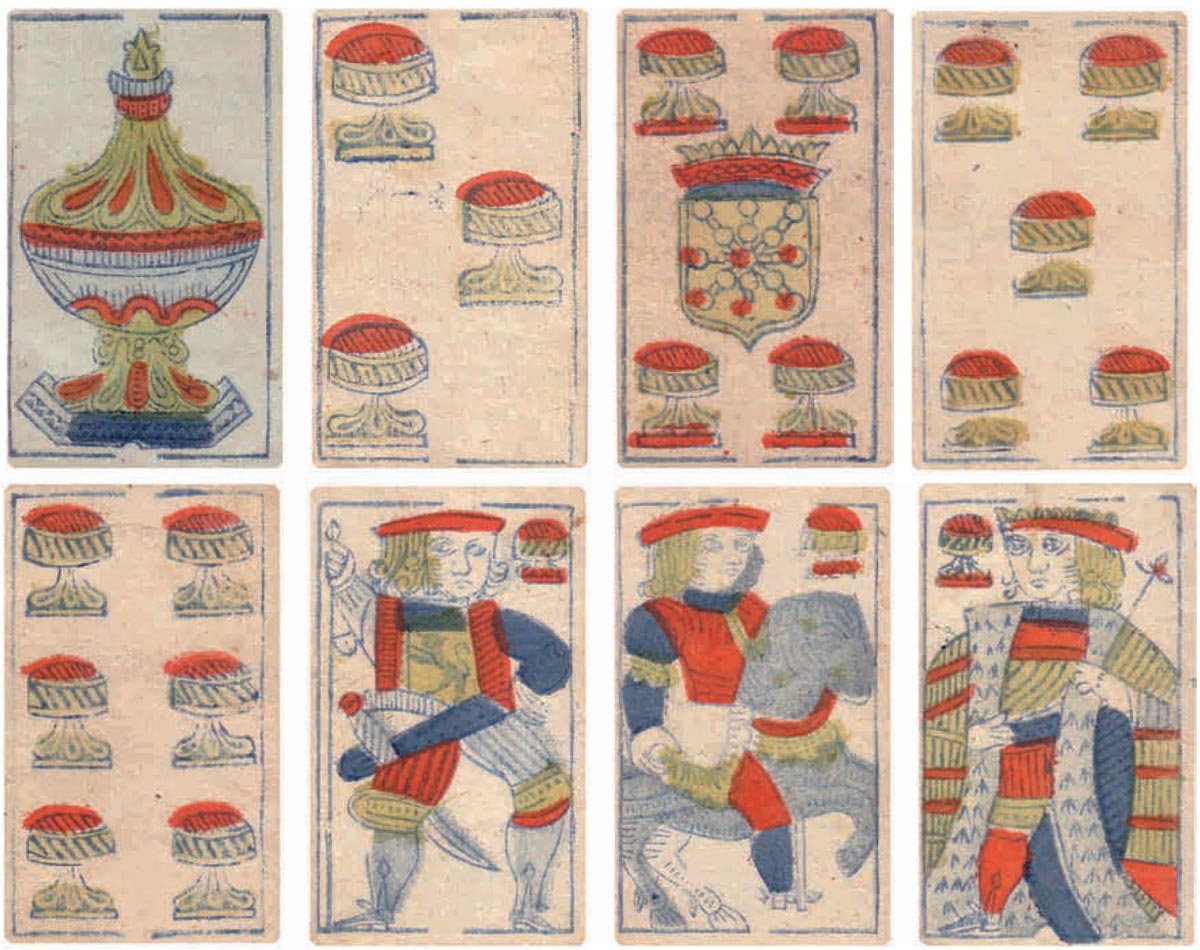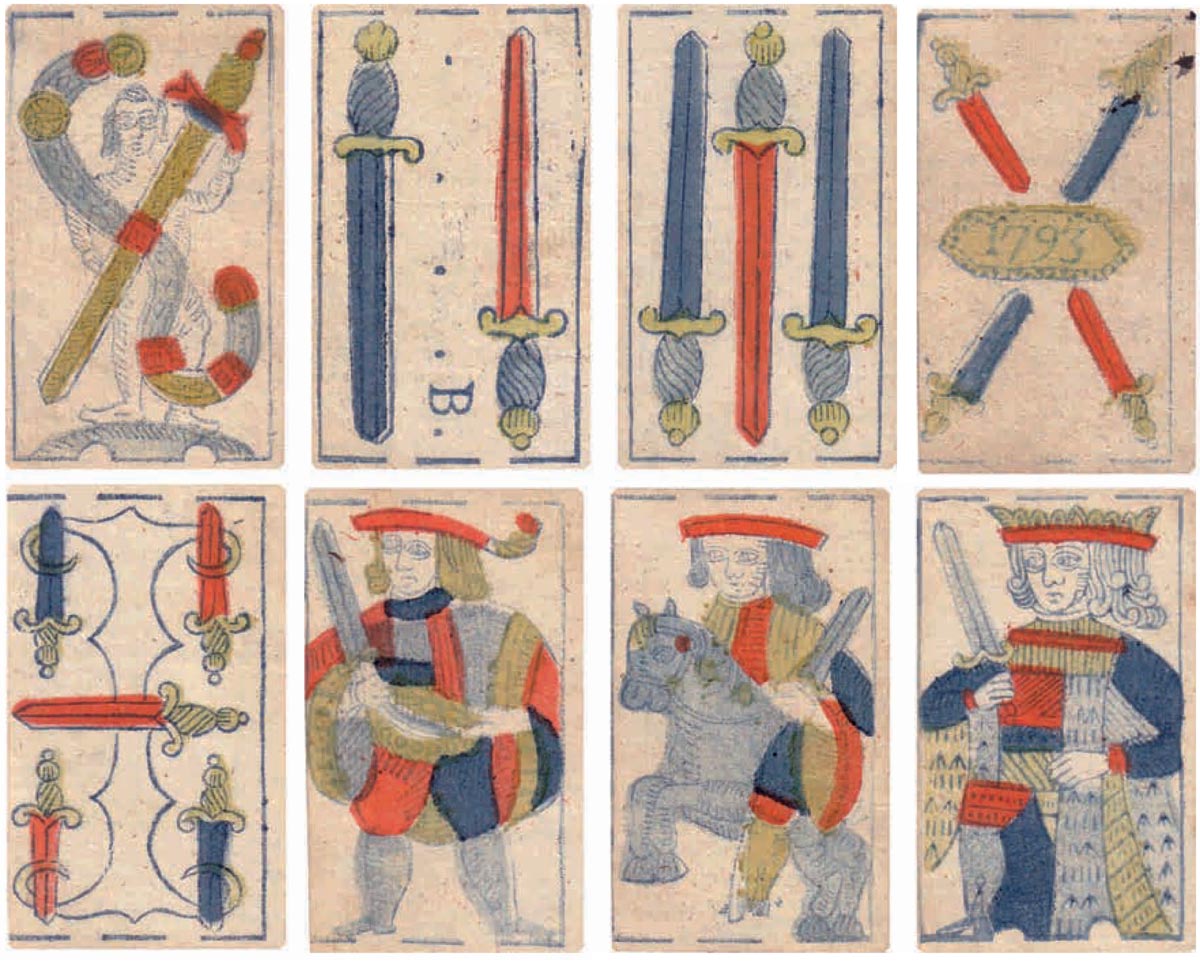Navarra Pattern, 1793
Navarra pattern by an unknown cardmaker with initials I. I., 1793.
Navarra pattern by an unknown cardmaker with initials I. I. shown on the three of batons, produced at the Pamplona Hospital Monopoly factory, dated 1793. The designs are likely copied from older woodblocks, or actually printed from older blocks with a new date added by fixing a small metal plate onto the four of swords. Other inscriptions appear to be missing - see the two and five of swords. It can often be noted that the quality of designs deteriorates over time because of such practices [more]. The ace of coins features the coat of arms of Navarra with a double-headed eagle (which was actually an anachronism by this time). These features were probably stipulated in the contract awarded to the cardmaker by the Hospital. The caballo of coins does not have the small bell, and in many other respects this pack closely resembles that of Pedro Varangot of 1786►




Above: Navarra pattern by an unknown cardmaker with initials I. I., 1793. Printed in blue outlines from woodblocks and coloured using stencils in three colours. The reverse has a pattern of arrowheads, also in blue, frequently found on 18th century playing cards. The maker’s name could be anything such as Iehan, Iacques, Iohannes, etc. 48 cards, 48 x 79 mm, used primarily for playing games such as Revesino, Cientos & Aluette. From the collection of Gonzaga Gil-Delgado Friginal.
Another very similar pack exists in the form of a woodblock in the Museo Fournier de Naipes de Álava [inventory nº 10002], of which a facsimile edition was produced in 1988►
CREDITS & REFERENCES
Ferro Torrelles, Víctor: Unos Naipes para el Reino de Navarra, in “La Sota” Nº44, Asescoin, Madrid.
Additional research by Alberto Pérez González.

By Simon Wintle
Member since February 01, 1996
I am the founder of The World of Playing Cards (est. 1996), a website dedicated to the history, artistry and cultural significance of playing cards and tarot. Over the years I have researched various areas of the subject, acquired and traded collections and contributed as a committee member of the IPCS and graphics editor of The Playing-Card journal. Having lived in Chile, England, Wales, and now Spain, these experiences have shaped my work and passion for playing cards. Amongst my achievements is producing a limited-edition replica of a 17th-century English pack using woodblocks and stencils—a labour of love. Today, the World of Playing Cards is a global collaborative project, with my son Adam serving as the technical driving force behind its development. His innovative efforts have helped shape the site into the thriving hub it is today. You are warmly invited to become a contributor and share your enthusiasm.
Related Articles

Tarot de las Coscojas
Historical playing card design, tarot symbolism and an almost psychedelic medieval surrealism.

Tarot de Valverde de la Vera
A series of 24 surrealist engravings by Mexican artist Claudio Favier in which archetypal Tarot alle...

Baraja de Juan Martín Zamorano
Deck inspired by El Pendón de los Zamorano, a military pennant dating from 1501, published by Priego...

Heráldica Castanyer No. 16
Strange variant of international pattern cards for poker or bridge.

Fantasy Spanish-suited deck
Fantasy Spanish-suited deck by Bertschinger y Codina, Barcelona.

Bertschinger y Codina - Cartes Françaises
French ‘Paris’ pattern made by Bertschinger y Codina, Barcelona, c.1850.

Braulio Fournier
Baraja Nº 1 produced by Braulio Fournier, Burgos, c.1868.

Pirritx eta Porrotx
Happy Families card game from the Spanish Basque Country.

Naipe Vizcaino
‘Naipe Vizcaino’ designed by Javier Urkiri and published by Industrias Gráficas Castuera and the Caj...

Baraja Turística del País Vasco
Basque poker deck of 55 cards published by Fournier with scenic views of the Basque Country.

Baraja Vasca
Spanish Basque Country deck with original drawings by María Isabel Ibañez de Sendadiano.

Baraja Cultura Española
ASESCOIN pack for 2022 designed by M.A. Corella featuring famous Spaniards and notable buildings.

Laurenzo Propagine
Spanish-suited cards made in Italy by Laurenzo Propagine.

Jeu de 7 familles Les Dynasties d’Artisans Basques
Long-standing Basque businesses represented in a traditional card game with illustrations by Odile A...

Archaic Franco-Spanish pattern
Archaic Franco-Spanish pattern by Guillaume & Jean Grossard (Bordeaux).

La Baraja del Mundial
“La Baraja del Mundial” satirical football deck published by Fournier for ‘Interviú’ news magazine. ...
Most Popular
Our top articles from the past 28 days

